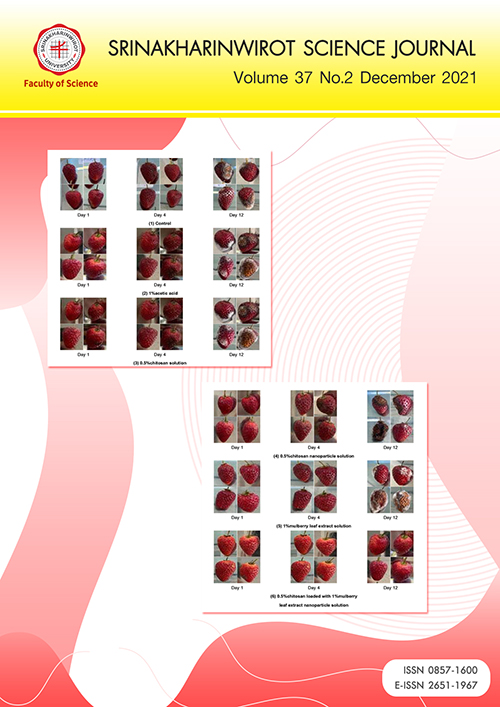Effect of Human Movement on the Spread of COVID-19 in Thailand
Keywords:
COVID-19, Human Movement, ThailandAbstract
In December 2019, the first case of coronavirus (COVID-19) was reported in Wuhan, China. The first case reported in Thailand was in Bangkok during January 2020. The first large outbreak occurred at Bangkok’s Lumpini Stadium in March. Those who were infected had visited the stadium for a boxing tournament. Many people left Bangkok and moved to other provinces to escape possible infection as the number of cases in Bangkok began to increase. This led to further infections in the other provinces. In this study, we estimated the number of exported cases from Bangkok to other provinces in Thailand during April 2020 using the probability of infection and travel volume from the Ministry of Tourism and Sports in April 2019. Our results found that the total estimated cases were 1,882 (95% credible interval 1,781-1,980), which was more than twice the number of actual reported cases. In this study, we found that when the travelling rate was reduced to 60%, the total estimated cases corresponded to the reported cases (740, 95% credible interval 684-795). We also found that the estimated cases depended on the rate of travel, thus decreasing the travelling rate led to a fall in the number of cases. The findings show how the reduction in traveller numbers can reduce the number of cases, which supports the government’s lockdown policy. The model may also be applied to a possible second COVID-19 wave in Thailand.Downloads
Download data is not yet available.
Downloads
Published
2021-12-28
How to Cite
Lincharoen, T., Chadsuthi, S., & Modchang, C. (2021). Effect of Human Movement on the Spread of COVID-19 in Thailand. Science Essence Journal, 37(2), 53–63. Retrieved from https://ejournals.swu.ac.th/index.php/sej/article/view/13877
Issue
Section
Research Article








